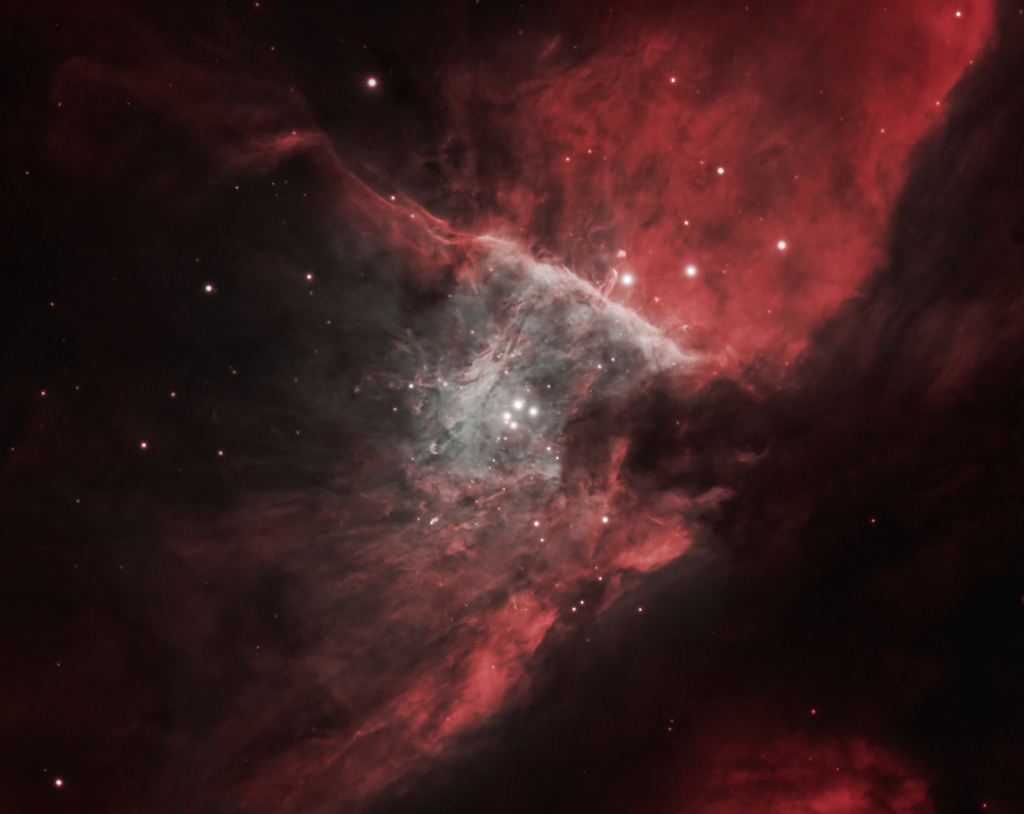안녕하세요, 잡학다식 입니다. 오늘은 과연 나사에서 어떤 방식으로 우주의 형상을 표현해 줄까요?
우선 이미지부터 볼 수 있도록 하겠습니다

해당 사진의 이름은 Trapezium: At the Heart of Orion 인데요 우선 NASA에서 공식적으로 발표한 설명들을 확인해 보겠습니다
Near the center of this sharp cosmic portrait, at the heart of the Orion Nebula, are four hot, massive stars known as the Trapezium. Gathered within a region about 1.5 light-years in radius, they dominate the core of the dense Orion Nebula Star Cluster. Ultraviolet ionizing radiation from the Trapezium stars, mostly from the brightest star Theta-1 Orionis C powers the complex star forming region's entire visible glow. About three million years old, the Orion Nebula Cluster was even more compact in its younger years and a dynamical study indicates that runaway stellar collisions at an earlier age may have formed a black hole with more than 100 times the mass of the Sun. The presence of a black hole within the cluster could explain the observed high velocities of the Trapezium stars. The Orion Nebula's distance of some 1,500 light-years would make it one of the closest known black holes to planet Earth.
이번에도 광활한 우주 앞에 인간이 얼마나 작은 존재인지 다시 한번 알게 되는것 같습니다
저는 내일도 더 좋은 사진과 함께 돌아오겠습니다, 그럼 행목한 하루 되시길 바랍니다
'과학상식' 카테고리의 다른 글
| NASA 나사의 오늘의 이미지들 (2024-01-07) (0) | 2024.01.08 |
|---|---|
| NASA 나사의 오늘의 이미지들 (2024-01-06) (1) | 2024.01.07 |
| NASA 나사의 오늘의 이미지들 (2024-01-04) (1) | 2024.01.05 |
| NASA 나사의 오늘의 이미지들 (2024-01-03) (0) | 2024.01.04 |
| NASA 나사의 오늘의 이미지들 (2024-01-02) (0) | 2024.01.03 |